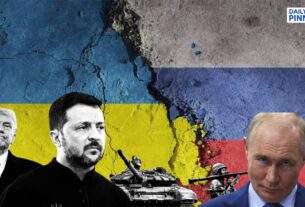Few government departments evoke as much pride—or suspicion—as the Archaeological Survey of India (ASI). Tasked with unearthing the roots of a millennia-old civilisation, ASI finds itself at the crossroads of history, politics, and increasingly, Twitter debates. If you thought the only bones ASI dug up were ancient, you haven’t seen the finger-pointing over where—and why—India’s excavation rupees are spent.
A Budget as Deep as Our History… Or Is It?
Let’s begin with the cold hard data: In the last five years, ASI splurged nearly ₹34.81 crore on excavations across 58 sites in 17 states. But this money is less than 1% of ASI’s annual budget, even after government assurances to raise it to 5%. The rest? A pile of it goes to restoration, maintenance and the ever-expanding army of bureaucratic paperwork.
But here’s where things get muddy—almost one fourth of that excavation spending (25%) went to just one state: Gujarat. And a gob-smacking 94% of Gujarat’s share was poured into Vadnagar, Prime Minister Modi’s much-publicised hometown. Coincidence, coincidence, everyone shouts! But try telling that to the southern states, who sniff a whiff of bias wafting over the Sardar Patel’s Statue of Unity.

Gujarat’s Golden Shovel
- Vadnagar: ₹8.03 crore out of the ₹8.53 crore total spent in Gujarat.
- The rest of Gujarat’s sites—Valabhipur, Vihar, Sarwal, Lothal—were left fighting over the excavation crumbs.
Southern States: Digging for More Than Just Artefacts
Tamil Nadu’s Tale of Two Budgets
If you want a crash course in regional grievance, say the word “Keezhadi” in Tamil Nadu. Archaeologists and politicians alike will regale you with the ancient glories of the Vaigai Valley Civilisation before sighing about bureaucratic roadblocks.
- Adichanallur (Iron Age site): ₹2.11 crore received from ASI.
- Keezhadi: After national headlines and heated debates, the site’s funding and leadership became a cause for celebration. The ASI stepped back and today, it’s the Tamil Nadu State Department of Archaeology—with a 2024–25 budget of ₹25.65 crore—that bankrolls Keezhadi’s open-air museum (₹17 crore), eight-site excavations (₹5 crore), genetic studies (₹3 crore), and even a deep-sea port project (₹65 lakh).
Table 1: Keezhadi Excavations – Funding by Source
| YEAR | Funding | Amount Budgeted (crores) | Purpose |
| 2024-2025 | Tamil Nadu State Dept. of Archaeology | 25.65 | Museum, excavations, genetic studies |
| – | Open air museum | 17 | Construction/ Displays |
| – | Excavations (8 sites) | 5 | Archaeological digs |
| – | Genetic Studies | 3 | DNA/heritage research |
| – | Deep-sea port project | 0.65 | Underwater archaeology |
Keezhadi Controversy Cliff’s Notes
- In 2017, local academics accused the BJP-led Centre of trying to stall Keezhadi’s excavations. Why? The site’s findings suggested early urban life in Tamil society, challenging “north-centric” historical narratives.
- The transfer of star archaeologist K. Amarnath Ramakrishna was seen as a bureaucratic bulldozer flattening Tamil pride.
- The ASI said it followed standard transfer rules. Critics called it sabotage-by-protocol.
- Parliament saw questions fly and ultimately, the Tamil Nadu government took over funding, while the ASI quietly backed away.
What About the Rest of the South?
- Andhra Pradesh, Karnataka, Kerala—each scored 1–3 ASI-funded excavations in five years, usually at a much smaller scale (between ₹50 lakh–₹1.5 crore per project), often focused on megalithic or Buddhist sites.
The Restoration Reality
If you’re picturing Indiana Jones-style digs, dial down your expectations. Nearly 40% of ASI’s budget goes into restoration and maintenance, including cleaning pigeon poop from ancient temples and putting up “keep off the grass” signs in Mughal gardens. As per the latest numbers, the allocation for preserving monuments shot up by 70% from ₹260.9 crore (2020–21) to ₹443.5 crore (2023–24). Yet, the funds amount to a mere ₹11 lakh per “monument of national importance”—according to one parliamentary panel, “precious little for a culturally rich country like India”.
Restoration Expenditures by State: Examples
- Maharashtra: Received ₹2.75 crore for the Mumbai Circle (restoring Murud-Janjira, Shivneri, Elephanta caves, etc.), but officials still say it falls short of needs.
- Karnataka: Funds have focused on Hampi, Somanathapura, and a score of Vijayanagara sites. The demand far outstrips allocations.
BJP vs. Non-BJP Ruled States: Digging Up “Bias”
The Heart of the Accusation
Non-BJP ruled southern states (Tamil Nadu, Kerala, Telangana, parts of Karnataka) repeatedly accuse the Centre of playing favourites—with excavation funds acting as levers of political patronage. In Parliament sessions and newsrooms, the charge flies: Why do “election-facing” or BJP/NDA-ruled states bag more central funding—whether for roads, statues, or, you guessed it, ancient bones?
The Centre’s Rebuttal
Finance Minister Nirmala Sitharaman calls such allegations “just unfounded,” rattling off investments in opposition strongholds—Tamil Nadu, Kerala, West Bengal, etc.—to prove the budget’s “inclusivity”. She points out “substantial assistance” for monuments and museums in states irrespective of ruling party. BJP MPs highlight schemes for Telangana, massive disaster-related restoration drives in Kerala, and the competitive criteria for funding state “wishlists.”
The Data Dance
- Northern Bloc: Haryana, Uttar Pradesh, Madhya Pradesh scored as many or more excavations than Tamil Nadu but, aside from select sites (Rakhigarhi, Ratnagiri), their projects received smaller average allocations.
- Bihar and Bengal: Despite opposition cries of neglect, schemes like Nalanda restoration and Bengal’s Buddhist circuit continue (albeit often at slower pace and lower budgets compared to Gujarat or select northern sites).
Election-Time Economics?
Southern opposition and some commentators point out a recurring pattern: Large-scale excavation/fireworks in election-bound or politically sensitive regions (Gujarat, Uttar Pradesh) while southern and eastern sites see a less dramatic uptick.
The Bigger Picture: Beyond Excavations
What Does ASI Actually Spend On?
- Excavation: Fieldwork, scientific survey, sampling, and reporting—less than 1% of budget.
- Restoration: Repairing, cleaning, and sometimes “over-restoring” ancient monuments.
- Maintenance: Site security, visitor infrastructure, lawns, and ticket window maintenance.
- Museums/Public Engagement: New visitor centers, digital installations, public information, and some science-based projects (DNA studies, for instance, in Tamil Nadu).
Staffing and Systemic Issues
- Chronic under-staffing: Many regional “circles” are forced to prioritize restoration over new digs.
- Bureaucratic delays and lack of trained archaeological staff slow the pace of reporting and project completion.
- The much-criticized transfer and posting policies provide ammo for those seeing political interference at play, especially during high-profile excavations like Keezhadi.
Controversies, Gaps, and the North-South Faultline
Keezhadi: More Than Mud
Keezhadi has become a lightning rod for everything that’s fraught about Indian archaeological funding: regional pride, Centre-state relations, and whose history gets top billing. The allegations range from direct interference (“deliberate attempts to stall”, “refusal to approve reports”) to subtler complaints about non-recognition of Tamil cultural antiquity. The union government, for its part, insists it is just ensuring academic rigour and objective science.
Other Contentious Sites
- Rakhigarhi, Haryana: Received heavy investment, often cited by the government as proof it’s not “anti-Dravidian” or “anti-Tamil.”
- Nalanda, Bihar & Buddhist Circuits: Upgraded restoration in opposition-led or non-BJP states, used as counter to bias allegations.
- Ayodhya, Uttar Pradesh: Not technically “excavation,” but the focus on monument enhancement here is frequently cited by critics of Central priorities.
State by State: Who Got What?
Gujarat (BJP-ruled)
- Six excavations, with Vadnagar the runaway beneficiary (₹8.03 crore/₹8.53 crore).
- Sites: Vadnagar, Lothal, Valabhipur, Vihar, Sarwal.
Tamil Nadu (DMK-ruled, Opposition)
- Four ASI excavations (Adichanallur, Perur, Siranur, Sembian-Kandiyur).
- ASI’s contribution: ₹3.43 crore total, ₹2.11 crore for Adichanallur.
- Keezhadi and most expanded work fully funded by the Tamil Nadu state government (₹25.65 crore in 2024–25).
Haryana (BJP-ruled)
- Excavations at Rakhigarhi and Kaserua Khera drew substantial funding due to Indus Valley connection.
Odisha (BJD-ruled, Non-BJP)
- Received significant ASI allocation for Ratnagiri, but less emphasis compared to Gujarat.
Uttar Pradesh (BJP-ruled)
- Five sites excavated, focus on Ayodhya, Kausambi, Sarnath; average site allocation mid-tier.
Telangana & Andhra Pradesh (TRS/YSRCP-ruled, Non-BJP)
- Bagged moderate allocations; local monuments like Buddhist sites at Phanigiri, Kondapur.
Kerala (Left-ruled, Opposition)
- One or two minor archaeological projects, some said to be underfunded compared to state “need.”
Bihar & West Bengal (Opposition)
- State leaders voice “routine neglect,” but evidence shows funding for select high-profile sites.
Restoration & Maintenance: The Undersung Money Pit
While headlines focus on excavation glamour, the lion’s share of the ASI’s money is spent simply stopping crumbling temples from returning to dust. From the Mughal gardens to Chola bronzes to Buddhist viharas, maintenance is a year-round, high-cost slog across India’s humid, polluted, and sometimes mischief-prone landscape. Parliamentary panels have called the funds “precious little,” with local ASI offices often forced to choose between fixing a wall and building a visitors’ restroom.
The North-South Divide: History Repeats… and so Does Bias Allegation
The perceived neglect of Tamil and other southern histories at the national level predates the BJP—older congress governments faced similar charges. But today, amid the Hurriyat of state pride and social media finger-wagging, every funding decision is political theatre, every excavation a potential election issue, and every transfer, an existential crisis for subcontinental archaeology.
What Needs to Change?
- Transparency: Publish a state-by-state, site-by-site breakdown (with justifications) for all ASI project expenditures. The current opacity is fertilizer for rumour and resentment.
- Meritocratic Funding: Allocate money on the basis of site significance and scientific merit, not regional optics.
- Devolution & Collaboration: Allow more excavation licenses and budgets to go directly to proactive, well-equipped state agencies (like in Tamil Nadu).
- Parity in Restoration: Upgrade “monuments of national importance” in states currently underserved by ASI, coupling restoration with local tourism and education initiatives.
Look beyond the trowels and trenches, and India’s archaeological budget wars reveal a richer truth: history is always alive and always contested. Southern states will keep demanding their share of the spotlight (and the rupees), while the Centre will insist it’s being fair to all. In the end, perhaps the real excavation India needs is not just beneath the soil, but in the way the nation decides whose stories, and whose stones, matter most.
Or, as one embattled archaeologist put it, “In India, relics don’t just get unearthed—they get politicised, televised, and weaponised.” The digging never stops.
The crux of the funding bias controversy around the ASI—especially in relation to Keezhadi and southern India—can be distilled into several sharp, well-supported points:
Disproportionate Allocation: In the last five years, about 25% of ASI’s entire excavation budget was spent in Gujarat, and 94% of that in Vadnagar, Modi’s hometown, while southern states like Tamil Nadu received much less, and mostly for a single major site (Adichanallur). This stark imbalance, especially compared to the number and significance of ancient sites in the South, underpins widespread accusations of favouritism.
Keezhadi and Suppression Allegations: The Keezhadi site in Tamil Nadu is seen by many as proof of a 2,600-year-old urban Tamil civilization. Critics argue ASI (driven by the Union government) abruptly halted major excavations at Keezhadi and transferred key archaeologists as the site’s evidence began to challenge North-centric historical narratives. Subsequently, local (state) funding and effort took over to continue discoveries at Keezhadi.
Narrative Manipulation: Southern intellectuals and politicians frequently claim that ASI prioritizes projects which support a “one culture, one India” idea, focusing heavily on North/West Indian sites, Saraswati-centric digs, and Indo-Aryan narratives—while suppressing or slow-walking projects that highlight Dravidian or Tamil antiquity. Critics cite RTI data showing enormous disparities in language/culture allocations (e.g., thousands of crores for Sanskrit programs vs. just a fraction for Tamil).
Institutional Pushback: The ASI and Union Ministry consistently deny any North-South bias, arguing that scientific rigor, not regional politics, dictates funding and publication timelines. They state that revisions to Keezhadi’s excavation report are due to scientific and methodological deficiencies, not an effort to silence Tamil voices or history.
Political and Cultural Flashpoint: Keezhadi has become a lighting rod for contesting the national historical narrative. State politicians and prominent archaeologists allege the central government uses funding and administrative levers to control which stories—and which regions—get emphasised in India’s official past. The delays, report demands, and abrupt transfer of archaeologists are read as signs of this political control.
Broader Pattern: Beyond Tamil Nadu, other non-BJP or opposition-ruled states in the south and east echo similar complaints that ASI’s project priorities align suspiciously closely with BJP/NDA political interests and strongholds, while “difficult” or non-aligned regions are left with far less central support.
TL; DR version
The core message is that there’s a clear regional bias in ASI’s excavation funding and project priorities, with excessive emphasis on politically significant or North-centric sites (like Vadnagar), and a pattern of neglect, bureaucratic obstacles, or outright suppression of southern and particularly Tamil archaeological discoveries like Keezhadi. While the ASI officially denies this, persistent disparities in both resource allocation and narrative control fuel a perception—and a heated debate—about whose history gets to be called India’s.
Data Embassy: How India Can Dominate the Next Digital Sovereignty Revolution
References:
(Data and examples drawn from official government answers, CAG reports, state budgets, news analysis from The Print, and statements from all political sides as of July 2025.)
- The Week — Transfer of archaeologist Amarnath Ramakrishna amid Centre-State Keezhadi row and allegations of anti-Tamil bias
- OpIndia — Keeladi excavation controversy: Details on ASI’s report, political tussle, and Centre vs. Tamil Nadu
- The Print — Keezhadi excavation report under review, Centre’s parliamentary statements, and expert comments
- The News Minute — Opposition slams transfer of Keezhadi excavator, exposing the North-South history divide
- Reddit — In-depth community discussion on the Keezhadi excavations and the associated controversy




